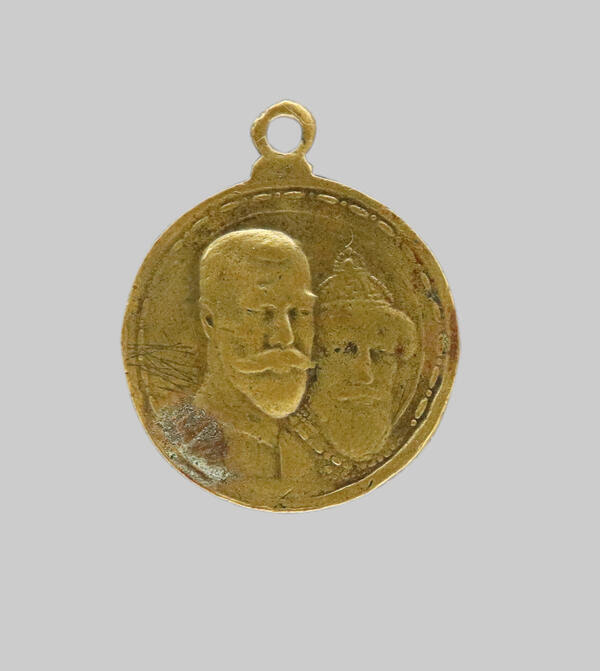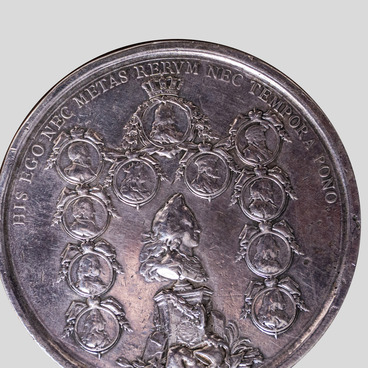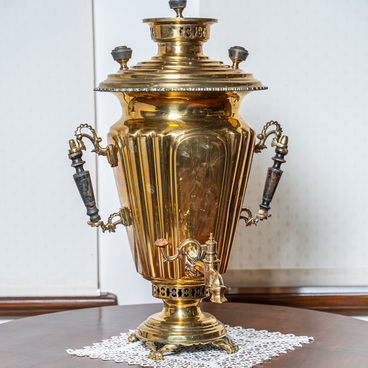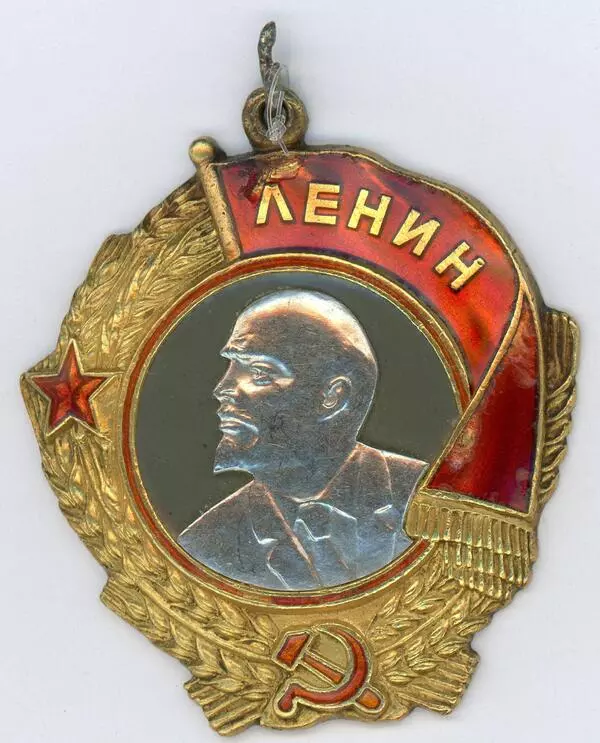Emperor Nicholas II established the medal ‘In Commemoration of the 300-th Anniversary of the Reign of the Romanov House’ on February 21, 1913.
Its front side contained portraits of Tsar Mikhail Fedorovich — the founder of the royal dynasty — and the ruling emperor, Nicholas II himself. There is an inscription on the reverse side: ‘In Commemoration of the 300th Anniversary of the Reign of the Romanov House on 1613-1913.’
The medal was intended for persons who took part in the organization of celebrations on the occasion of the 300th anniversary of the Romanov dynasty. In fact, the right to wear the medal was granted to a wide range of people, but it was necessary to buy it. It was awarded free of charge only to certain categories of citizens: those who at the time of the celebration were in public service in the military, naval, civil or court departments, members of the State Council or the State Duma of the Russian Empire, clergy and religious officials of all religions, officials of the maritime and civil departments in retirement who had the right to wear a uniform, teachers and educators of both sexes in all state higher, secondary and lower educational institutions, artists of imperial theaters, sisters of mercy of the Russian Red Cross Society, volost foremen, chairmen of volost courts, village elders, persons awarded Military orders, all persons who actively participated in the preparation and organization of the celebration of the anniversary or who took part in the celebrations themselves, artisans, medalists and workers who made medals at the mint.
The main circulation of medals amounted to over 1,500,000 copies and it was produced at the Saint Petersburg mint. In total, by June 26, 1914, the mint received at least two million orders for the manufacture of medals.
Anton Vasyutinsky was the author of the project of the medal. The bas-relief on its front side was created by sculptor Mikhail Kerzin. Private workshops could produce similar medals. Their products sometimes differed significantly in image detail. Most often, medals in private workshops were made of silver, sometimes gilded, less often of gold. Besides this, there were popular versions of the medal with a diameter of 15-16 mm.






